
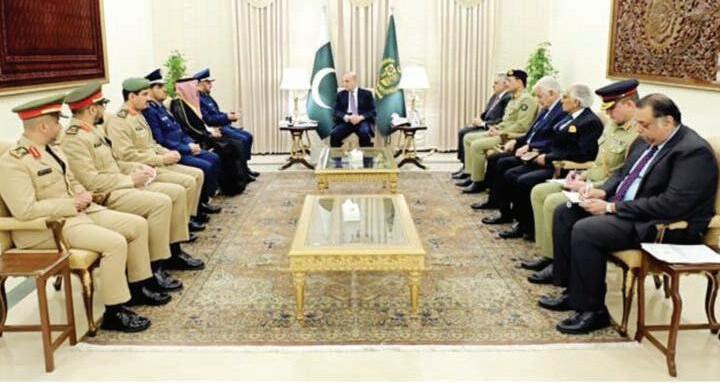

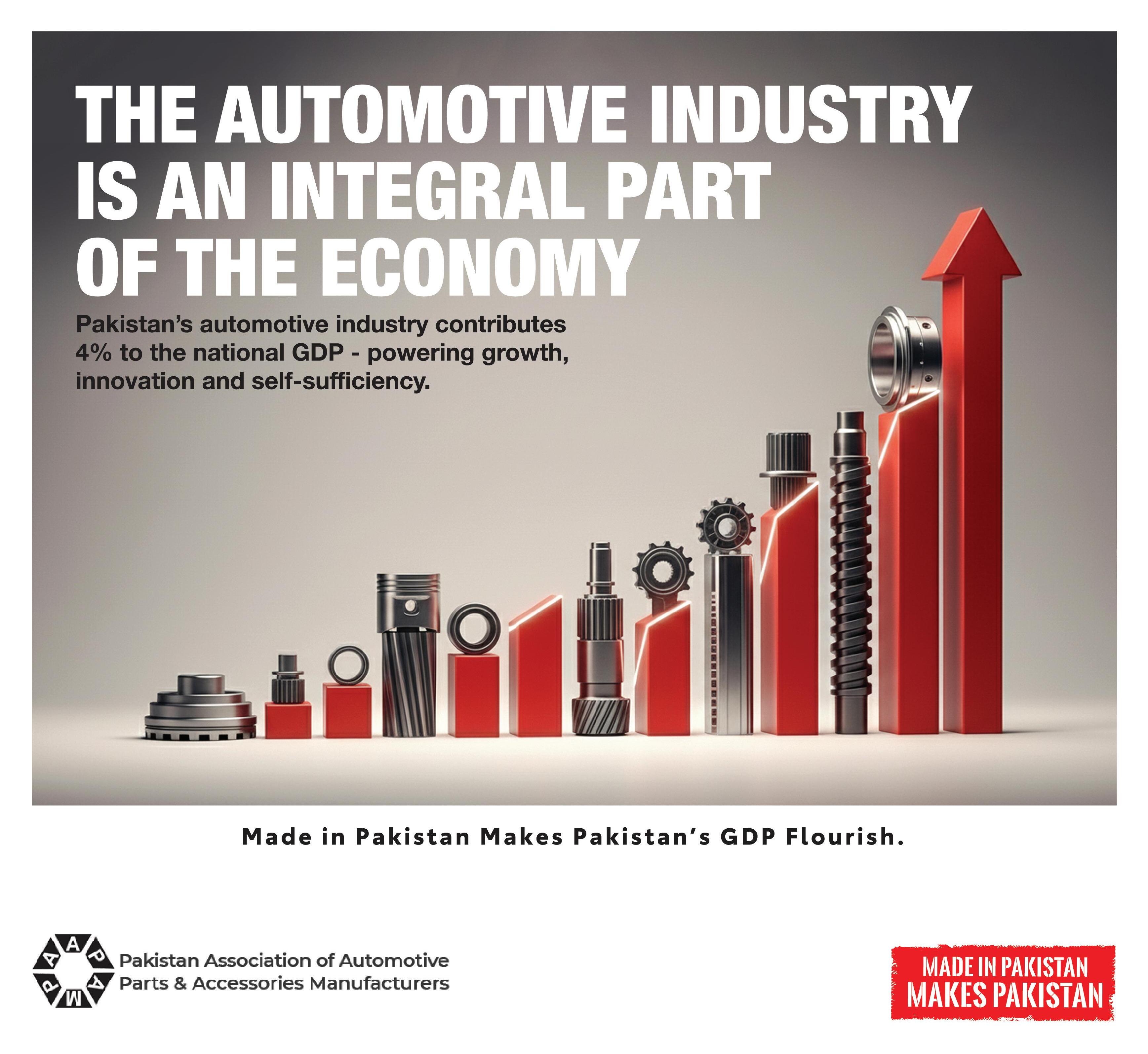







N e w s D e s k
Prime Minister Shehbaz Sharif on Monday ordered the abolition of the Export Development Surcharge (EDS) directing authorities to immediately withdraw the levy as part of a broader push to revive Pakistan s stagnant exports
The decision came during a review meeting on the recommendations of a sub-working group formed in October to identify measures to raise export competitiveness according to a statement issued by the Prime Minister s Office The sub-working group chaired by Musaddiq Zulqernain, presented a set
of proposals based on sector-specific research After reviewing the recommendations the prime minister instructed all relevant ministries and institutions to begin implementation without delay
During the meeting, PM Shehbaz also ordered a third-party audit of the Export Development Fund (EDF) for the past five years to be carried out in line with international standards He further directed that a chairman from the private sector be appointed to improve the fund’s governance
The prime minister stressed that EDF allocations must be used strictly for export promotion including re-
search and development skills training for export-oriented industries and the provision of modern facilities He also instructed the government to review and restructure the Trade Development Authority of Pakistan (TDAP) to better support exporters and enhance global marketing of Pakistani products
The meeting was attended by Planning Minister Ahsan Iqbal Finance Minister Muhammad Aurangzeb, Commerce Minister Jam Kamal, Climate Minister Dr Musaddiq Malik, Petroleum Minister Ali Pervez Malik, Minister of State for Finance Azhar Bilal Kayani senior officials and members of the sub-working group
Major global satellite operators await Pakistan’s approval to launch broadband ser vices: repor t g LOW EARTH ORBIT INTERNET FIRMS SEEK CLEAR ANCE FROM SPACE ACTIVITIES BOARD AS WEAK INFR ASTRUCTURE, SPECTRUM SHORTAGES AND ROW HURDLES SLOW DIGITAL EXPANSION
s k Major global satellite operators, including Starlink Amazon Kuiper OneWeb Shanghai Spacecom and Galaxy Space are waiting for regulatory approval to begin operations in Pakistan as the country faces mounting challenges in expanding high-speed connectivity, The News reported, citing officials The delay has affected multiple sectors including information technology maritime services and disaster-response systems at a time when the government is pushing digitalisation and considering a cashless city model for Islamabad Despite official claims that 76% of the population is connected to the internet users in suburban and peri-urban belts continue to face weak coverage network congestion and unreliable data services Pakistan currently has 1 2 million copper-based broadband subscribers, 3 million fibre-to-the-home users and 5 million cable or broadcast ISP customers Copper lines struggle to deliver more than 8 Mbps while fibre deployment remains uneven and largely con-
fined to select neighbourhoods in major cities Even Tier-A cities such as Karachi Lahore Islamabad and Faisalabad experience patchy coverage, with far wider gaps in smaller urban centres Core network limits are tightening as well Pakistan depends on a small number of international submarine cables and five Karachi-to-Peshawar long-haul terrestrial links are nearing end-of-life Metro networks inside cities are also heavily congested, slowing operators’ efforts to upgrade infrastructure Low Earth Orbit (LEO) constellations already provide broadband in more than 70 countries particularly in remote areas, but have been unable to enter the Pakistani market due to the absence of finalised rules and permissions from the Pakistan Space Activities Regulatory Board (PSARB) Industry representatives confirmed they cannot proceed without formal clearance Telecom companies cite Right-ofWay delays as the largest barrier to nationwide expansion, with approval processes split across municipal bodies, housing societies provincial departments and cantonment authorities Peer
economies have adopted standardised low-cost RoW rules but Pakistani operators continue to face inconsistent charges and slow procedures In major cities, overhead cabling along key arteries reflects a lack of unified fibre-management planning Mobile networks which carry most digital-payment traffic also operate on one of the region s lowest spectrum allocations Operators say limited spectrum has constrained 4G expansion and stalled 5G trials, while neighbouring markets have already auctioned midband frequencies Officials say the bottleneck now lies with the PSARB which must finalise pending space rules, outline a clear timeline for landing-rights approvals and establish a transparent framework for satellite operators The board dominated by Suparco representatives currently has no privatesector members
Officials said that once PSARB completes its technical assessments and issues landing rights, the Pakistan Telecommunication Authority will process service permissions for operators seeking to enter the local market

P2025 floods which displaced millions, caused large-scale infrastructure losses and inflicted multi-billiondollar damages “The scale and frequency of such disasters show the disproportionate climate burden placed on countries that played almost no role in warming the planet she said Representatives from the newly estab-
forcing them to borrow for reconstruction due to insufficient grant-based support They called for new additional and concessional financing to ensure Loss and Damage assistance becomes transformative Speakers highlighted that children were among the most affected, with nearly half of Pakistan’s population under 18 Moriani said recurring disasters
etration, followed by Faisalabad and Sialkot, where industrial areas are driving solar adoption, she said Power cuts and tariff hikes have pushed Pakistan’s 250 million people to accelerate solar adoption and made it the world s third-largest panel importer with solar s share in generation exceeding its neighbour China
The south Asian nation will see more frequent negative-demand events, especially during bright summer afternoons industrial holidays and moderate temperature days with high solar output said Moriani Pakistan s lead negotiator at COP30 Pakistan s challenge is not whether renewable energy will grow, it is how fast the grid regulation and market design can evolve to keep pace she said The South Asian nation is planning to introduce new tariffs for large solar
users, as well as changes to fee structures to ensure businesses with panels share equally in the costs of grid upkeep she said Pakistan s grid-linked power demand is expected to grow 3-4% this year, slower than historical averages Next year, consumption is expected to rise more steeply but could be impacted more by higher solar use, Moriani said The surge in solar use has also pushed Pakistan to renegotiate its LNG contracts with top supplier Qatar and cancel cargoes supplied by Italy s Eni Moriani said Pakistan is looking for lower prices, flexible delivery schedules and potentially fewer cargoes she said While there were no formal negotiations with Qatar at COP30 the event provided diplomatic space for engagement with energy ministers and commercial representatives, she said
“The key aim is to align Pakistan’s gas import strategy with fiscal space demand outlook and seasonal patterns Pakistan seeks stability and affordability not expansion of LNG dependency


TS a u d i – P a k i s t a
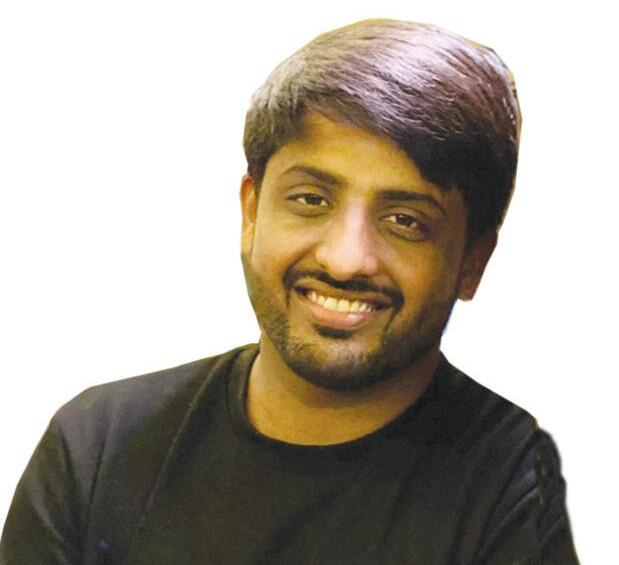

FO R four years the Afghan Taliban have insisted that they are a transformed movement responsible moderate and prepared to honor commitments made to the international community Yet their record since returning to power in August 2021 has proven the opposite Far from fulfilling the promises laid out in written agreements such as the 2020 Doha Accord and the 2024 Pakistan–UAE–Afghanistan trilateral arrangement the Taliban have repeatedly violated their obligations while reaping political concessions financial inflows, and diplomatic space Today, Afghanistan is no longer merely unstable; it is a revived hub for transnational jihadism The world can no longer afford to look away The Doha Agreement’s first requirement was clear: The Taliban would enter intra-Afghan dialogue to negotiate a political settlement with the then-government in Kabul In return, 5,000 Taliban prisoners were released on the condition that they would not rejoin militancy What followed was a straightforward betrayal Instead of sitting across the table from the Ashraf Ghani administration the Taliban escalated their offensive and a significant number of the released prisoners returned immediately to the battlefield The result was not political compromise but the violent takeover of Kabul in August 2021 Taliban 2 0 promised inclusivity and moderation What Afghanistan received instead was an exclusionary hardline emirate that mirrors the obscurantist rule of the 1990s Women and girls were banned from secondary and higher education barred from most workplaces and erased from public life Ethnic minorities Tajiks, Uzbeks, Hazaras, and others remain structurally marginalized Afghanistan is home to 14 major ethnic groups, yet the Taliban regime is almost entirely Pashtun in composition In a 49-member cabinet only a handful of Tajiks Uzbeks Baloch or Nuristanis are present; every key ministry is held by Pashtuns aligned with the Kandahar Shura The leadership is composed almost exclusively of former Taliban commanders, not technocrats or representatives of Afghanistan’s diverse society The Taliban prom-
centrality of defence collaboration, security coordination, and counterterrorism efforts The Saudi military chief ’s laying of a floral wreath at the Yadgar-e-Shuhada underscored the symbolic importance Riyadh places on Pakistan’s sacrifices against terrorism and its recognition of Islamabad as a critical regional security actor The conversations at the Joint Staff Headquarters further expanded the scope of cooperation The ISPR s statement noted that both sides discussed the “evolving global and regional security environment” a phrase that carries significance given the shifting geopolitical landscape of the Middle East and South Asia Saudi Arabia today faces security challenges that are far more complex than at any time in the last decade, from missile and drone threats to regional realignments Pakistan’s military experience and strategic depth make it a valuable partner as Riyadh recalibrates its approach to security Equally important is the reaffirmation by General Sahir Shamshad Mirza of Pakistan s unwavering commitment to safeguarding the territorial integrity of the Kingdom of Saudi Arabia and ensuring the protection of Harmain al-Sharifain ” This assurance long part of Pakistan’s foreign policy has now gained renewed relevance In an era where threats transcend conventional borders from cyberattacks to hybrid warfare the defence of holy sites is no longer a symbolic pledge but a strategic undertaking requiring robust intelligence cooperation and rapid-response capability Critics may view such closeness with caution worrying about Pakistan being drawn into regional conflicts However the foundations of this partnership indicate otherwise The new defence agreement is fundamentally defensive not interventionist It is built on mutual deterrence, coordinated preparedness, and joint stability measures not on military adventurism The focus on training exercises and counterterrorism suggests an emphasis on strengthening in-
ised change but inequality and repression remain cornerstones of their rule The second major plank of the Doha Agreement was even clearer: The Taliban would never again allow Afghan soil to be used to threaten other countries Instead, Afghanistan has regressed into a sanctuary for global jihadist groups The killing of Ayman al-Zawahiri in Kabul in August 2022 one year after the Taliban assumed power was the first unmistakable sign Repeated assessments by analysts and former intelligence officials indicate that senior al-Qaeda figures, including Saif al-Adl and Hamza bin Laden, have been sheltered in Kabul Multiple credible international reports reinforce this pattern UN monitoring teams in 2025 detailed al-Qaeda’s efforts to reorganize in Afghanistan rebuild networks and reactivate sleeper cells abroad The General Directorate of Intelligence (GDI) the Taliban s intelligence arm has been implicated in providing safe houses, movement passes, and weapon permits to Tehrik-e-Taliban Pakistan (TTP) leaders Estimates suggest 6,000–6,500 TTP fighters and a dozen senior al-Qaeda operatives are present in Afghanistan The Taliban s continued tolerance indeed facilitation of these groups directly threatens Pakistan and the wider region Pakistan has borne the brunt of this failure Despite signing a trilateral agreement with Pakistan and the UAE in 2024 which included commitments to relocate TTP militants away from the border the Taliban delivered only symbolic compliance A few hundred fighters were moved with no transparency or monitoring mechanism Some of the funds designated for relocation reportedly ended up bolstering extremist groups under the guise of refugee assistance Despite enormous diplomatic outreach four visits by Pakistan’s Foreign Minister, multiple missions by senior defense officials hundreds of flag meetings demarches and protest
h e c e n t r a l i n c u b a t o r o f t r a n s n a t i o n a l t e r ro r i s m . F ro m
I S I S - K h o r a s a n t r a i
stitutional capacity rather than projecting force Moreover, Pakistan s ties with Saudi Arabia complement, rather than compromise, its broader diplomatic posture Islamabad maintains open channels with all key actors in the Middle East including Iran Turkey and Qatar Its cooperation with Riyadh has never prevented it from pursuing balanced regional relations Rather the stability that results from closer security alignment with Saudi Arabia strengthens Pakistan s ability to play a moderating role in regional affairs Strategically this moment offers Pakistan an opportunity to leverage defence cooperation for wider national gains Enhanced security ties can serve as a foundation for greater economic integration, including Saudi investment in mining, renewable energy, agriculture, and infrastructure all areas where Riyadh has expressed interest Defence diplomacy, when aligned with economic diplomacy creates pathways that purely commercial negotiations often cannot
The broader context is equally important
The global security environment is shifting rapidly, and alliances are being redefined Middle powers like Saudi Arabia and Pakistan increasingly recognise that their long-term stability depends on cooperative frameworks powered by trust shared interests and institutional resilience The consolidation of Saudi–Pakistan defence ties reflects this new reality
As Pakistan navigates economic challenges and seeks to reposition itself in global geopolitics, its partnership with Saudi Arabia stands as an anchor of stability This week’s visit by General Al Rowaili is not just another entry in the long list of bilateral engagements it is a signal that both countries are preparing for a future in which their security and prosperity are deeply intertwined
Strengthening this alliance is not merely a diplomatic choice; it is a strategic necessity
The writer is a freelance columnist
General Al RowailiÊs visit served to reaffirm this direction. According to the Prime MinisterÊs Office, he conveyed the kingdomÊs desire to „elevate the current excellent defence and strategic partnership to new heights ‰ Prime Minister Shehbaz Sharif, in turn, highlighted PakistanÊs commitment to broadening cooperation across defence, security, counterterrorism, and joint military training His references to two recent visits to Riyadh where the defence agreement was finalised emphasise how proactively both sides are working to translate diplomatic goodwill into comprehensive institutional mechanisms

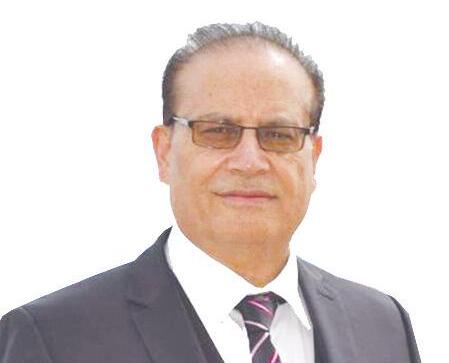
defence missiles naval security and cyber systems Add a prospective F-35 tranche of around $10–12 billion, and Trump-era arms frameworks with Saudi Arabia edge toward $260 billion in nominal value, even before counting legacy sales and support Not all of this will be delivered in full but the political signal is unmistakable: Saudi Arabia is no longer just a big oil client; it is the premier customer of the U S defence-industrial state To grasp how disruptive this is, one must recall what Washington’s Middle East doctrine was really about for decades American strategists had two core goals: keep the oil and trade arteries open and ring-fence Israel s security with a lattice of bases pre-positioned stockpiles and compliant regimes U S aid to Israel reflects that priority Under a ten-year memorandum of understanding signed in 2016, Washington pledged $38 billion in military assistance between 2019 and 2028 $3 8 billion a year including $500 million for missile defence Cumulatively Israel has received more than $300 billion in U S economic and military aid since 1948, making it the largest single recipient of American assistance anywhere in the world Even today, Israel holds roughly $39 billion worth of active U S Foreign Military Sales cases from precision munitions to missile-defence components That hardware has been used with devastating effect in Gaza since October 2023 After Hamas s attack that killed some 1,200 people in Israel, the subsequent war has, according to the Gaza Health Ministry and UN-cited tallies killed more than 69 000 Palestinians by early November 2025 with total fatalities across Gaza and Israel now exceeding 71 000 Entire neighbourhoods were levelled, famine conditions took hold, and the word genocide moved from activist slogans into the vocabulary of UN officials, human-rights bodies and
international courts In much of the Arab and Muslim world, this confirmed a long-held belief: that American bases in Qatar Bahrain Kuwait and elsewhere existed less to protect host countries than to guarantee Israel s ability to fight occupy and when it chose annex In that climate, the Trump–MBS summit is startling because it punctures the aura of untouchability around Israel’s military monopoly By opening the F-35 club to Saudi Arabia Washington is no longer treating Israel as the only trusted steward of fifth-generation air power in the region Instead, the United States is consciously elevating Riyadh into a near-peer, even at the cost of re-arguing Israel’s “qualitative military edge” in Congress and within its own law
The Council on Foreign Relations notes that maintaining that edge has for years meant giving Israel the region s first access to new platforms and then compensating it when others received high-end kit This time, it is Israel that must watch while another capital is courted with the crown jewels The strategic implications are far wider than one procurement line Saudi Arabia is already deepening security ties with Pakistan, the Muslim world s only declared nuclear power, and has the financial capacity to buy nearly any conventional system it desires The F-35 fleet would sit atop an ecosystem of imported missiles air-defence networks and cyber capabilities manned

Alongside this economic flood comes hard steel Trump has now publicly confirmed that Washington will sell F-35 Lightning II fighters to Saudi Arabia, ending IsraelÊs exclusive status as the only F-35 operator in the region Riyadh has formally requested up to 48 aircraft, a „multi-billion-dollar‰ packag e that U S officials acknowledg e will transform the regional air balance . The precise price tag is still classified, but expor t precedents are revealing AustraliaÊs F-35 programme , for example , works out to roughly $160 million per jet once training, spares, depots and suppor t are included


TH E debate over the amount of destruction in Gaza continues to
as more footage emerges from Gaza A recent video from the Associated Press has been circulating on social media It shows the complete destruction of an area of Gaza This has been seen before However, each time, one is only given a snippet of the total destruction caused by two years of war Each time these videos appear a vibrant debate breaks out on social media For those more sympathetic to the Palestinians the footage is evidence of the horrors of the war Ihab Hassan who describes himself as a human rights activist, wrote apocalyptic aerial footage from Gaza, nothing left standing, only endless rubble Others disagree and replies include references to “FAFO,” which essentially means “mess about, find out ” In essence this means that the civilians in Gaza deserved to have all their homes destroyed because of the atrocities of Hamas on October 7
The they deserved it argument is one type of response to the massive destruction and high death toll in the Gaza war Hamas-run health authorities in Gaza said in late October 2025 that more than 67,000 people were killed in Gaza in the war Although some argue that these figures are biased due to the fact that Hamas controls the Health Ministry in Gaza there are no alternative numbers that Israel has put out The IDF put out some data in 2024 during the first year of the war In July 2024, the IDF said, the forces have eliminated and apprehended approximately 14,000 terrorists Among the eliminated terrorists are six brigade commanders over 20 battalion commanders and approximately 150 company commanders
It s not clear how many more were killed since then but it stands to reason that at most it is twice that number which would be an estimate of some 20-28,000 That still means more than half of those killed in the war are civilians This has led to a debate about the civilian death toll
One argument posits that the number of civilians killed in this war is lower than in other conflicts This tries to break down the civilian death toll to a ratio compared to the number of enemy combatants killed This macabre math doesn t tell
been dismantled by December 2023 In August
2025, the IDF had to dismantle, once again, the Hamas battalion in Beit Hanun In fact almost all the Hamas battalions in northern Gaza had to be re-defeated sometimes several times How could Hamas be at a breaking point in northern Gaza in December 2023 but then the IDF had to go back into Gaza City in September 2025?
The same stories were told about Hamas being mostly defeated by April 2024 in all of Gaza Yet the fact is that the group held on to a lot of areas and was never challenged in key parts of central and northern Gaza The Rafah Brigade was also declared defeated by July 2024 only to have to be defeated again several times Members of the brigade are still hiding in tunnels in Rafah The reality is that a lot of the information that came out of the Gaza war is incomplete This makes it hard to draw some conclusions about the casualties and the war
What is clear is that a large number of civilians were killed In past Israeli wars it was considered a large number of civilians if hundreds were killed For instance in the 2009 Gaza war this was the case The fact that estimates say more than 30,000 people were killed in Gaza should require a pause for reflection Asserting that it s acceptable because the ratio is “1:1” doesn’t provide a real reflection on the war The destruction in Gaza also does not have an easy explanation If one goes past the FAFO argument which essentially argues they deserve it then the question is whether this level of destruction was necessary Some arguments say that this is how urban warfare works, because Hamas had snipers in buildings or stored munitions or had tunnel shafts, so that every building had to be destroyed However the reality of the fighting is in contrast to this depiction
While Hamas did use civilian buildings it was also cleared from many areas of Gaza only to have those areas handed back to Hamas For instance, the IDF went into Jabaliya in the first months of the war Most of the buildings were still standing at this time, although some were damaged The civilians had been evacuated Hamas was pushed out of part of the area Then the IDF left The IDF returned to Jabaliya several times during the war each time causing more destruction to re-defeat Hamas The destruction in places like Jabaliya wasn t because Hamas used every building Had the IDF held the place after first taking it, most of it would have been spared This is one reason that other urban battlefields have looked different than Gaza Mosul city for instance was the site of a 10-month battle against ISIS However to defeat ISIS the Iraqi army did the opposite of the IDF They called on civilians to move to IDP camps away from ISIS Then the army cleared the city street by street They never cleared the areas several times The US-led coalition stopped doing
was clearly in-
creased in some neighborhoods by the systematic demolition of almost every building In other areas the IDF used different tactics In the Hamad towers area of Khan Younis the IDF initially went in with a lot of special units and spared the buildings the total ruin that took place in parts of Rafah, for instance One theory presented for why high-rise buildings had to be destroyed in September 2025 was the argument that they could be used by Hamas as sniper positions However this argument raises questions about why they were not hit with airstrikes early in the war when the IDF first operated in Gaza City One Israeli official said that destroying the high-rises was a way to change the skyline of Gaza Was it about changing the skyline or because these specific buildings were being used by Hamas? Israel has the precision munitions that can hit targets in a large building as evidenced by the precision strike in Beirut on November 23
The theory that whole neighborhoods have to be razed because of the presence of snipers or terrorists is in contrast to how other militaries have fought insurgents The British Army didn t raze whole neighborhoods in Northern Ireland to defeat the IRA The US fighting terrorists in Fallujah didn’t raze the city This illustrates that the level of destruction in Gaza is not only a feature of urban warfare On the other hand it can be a feature of urban war Berlin and Stalingrad were destroyed in the Second World War The number of fighters engaged in those battles and the huge death toll is not similar to Gaza As such it doesn’t seem reasonable to compare the battle for Gaza to the battle for Berlin Even if it were reasonable it might be worth asking why the battle for Gaza took two years and the battle for Berlin took a few weeks
The level of destruction in Gaza is largely a result of the way the war unfolded The IDF had no clear plan to defeat Hamas or retake Gaza As such, the first weeks were filled with intense bombardment in October 2023 while IDF reservists re-trained to fight in urban areas The first year of war included raids into areas to defeat Hamas




view to broadening and upgrading bilateral cooperation to
the modernization of both countries Li said He expressed the hope that South Africa will better protect the lawful rights and interests of Chinese enterprises and the safety of their personnel China-South Africa cooperation has long played a leading and demonstrative role in China-Africa cooperation Li said pledging that China is ready to strengthen communication with South Africa within frameworks including the Forum on ChinaAfrica Cooperation (FOCAC) promote the implementation of the outcomes of the FOCAC Beijing Summit and jointly create a bright future of development and prosperity for China and Africa

early implementation in South Africa of China’s zerotariff treatment for 100 percent of tariff lines for African countries having diplomatic relations with China
China supports more competitive Chinese companies in investing in South Africa and enhancing cooperation in such areas as new energy, automobiles, healthcare, digital economy and infrastructure, with a

tional order
For his part Mashatile expressed gratitude for China s strong support for South Africa as the host of the G20 Summit



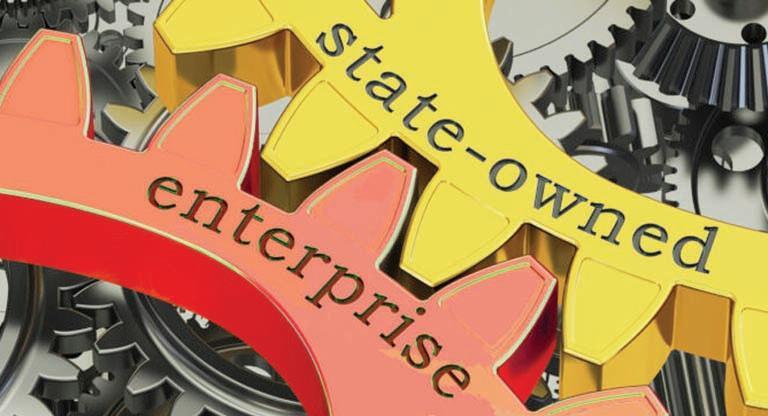


and its Additional Financing (AF) Chairperson BISP Senator Rubina Khalid and Secretary Amer Ali Ahmad warmly welcomed the mission and lauded ADB s role in enhancing Pakistan s social safety net which continues to impact millions of vulnerable households across the country During the meeting, Chairperson Senator Rubina Khalid highlighted

Türkiye's leading investment holding company, Koç Holding, reaffirmed its long-term commitment to Pakistan and Dawlance’s growth trajectory through a high-profile visit from senior executives of Koç Holding and Beko flagship of Koç Group in consumer durables industry The delegation included Dr Fatih Kemal Ebiçlioğlu President of the Consumer Durables Group at Koç Holding; Can Dinçer, Chief Commercial Officer for Türkiye and South Asia at Beko; Nihat Bayız, Chief Production and Technology Officer at Beko; and Handan Abdurrahmanoğlu Director of Regional Marketing Business Transformation and Growth at Beko Hosted by Umar Ahsan Khan Managing Director at Dawlance a subsidiary of Beko, the visit reflects Beko s long-term vision for Pakistan and its commitment to further deepening business ties, industrial development and sustainable growth in the region During the visit, the delegation toured Dawlance’s state-of-the-art manufacturing facilities in Karachi and Hyderabad continuously enhanced by investments in product innovation R&D and production modernisation
inDrive launches rickshaw delivery service in Karachi and Lahore
KARACHI s ta f f r e p o r t inDrive has officially launched a rickshaw delivery





Capital Development Authority (CDA) and Chief Commissioner Islamabad Muhammad Ali Randhawa The meeting was attended by CDA Board members including Member Admin Talat Mehmood Member Finance Tahir Naeem, Member Engineering Syed Nafasat Raza, Member Planning and Design Dr Khalid




Federal Constitutional Cour t dismisses IHC judges’ petitions over transfers
in
filed by
judges
In their petition Islamabad High Court judges Justice Mohsin Akhtar Kayani, Justice Babar Sattar, Justice Tariq Mehmood Jahangiri, Justice Ejaz Ishaq Khan, and Justice Saman Rafat Imtiaz argued that transferring their intra-court appeal to the Constitutional Court
the Supreme Court did not declare the transfers unconstitutional Against this decision five Islamabad High Court judges had filed intra-court appeals The Constitutional Court has dismissed the intra-court appeals of Islamabad High Court judges and others, thereby upholding the Supreme Court’s earlier decision A five-member Supreme Court bench had upheld the judges’ transfer under Article 200 by majority Similarly intra-court appeals filed by the Lahore High Court Bar the founder of Pakistan Tehreek-e-Insaf Tahir Faraz Abbasi Karachi Bar Association Riyasat Ali Azad, and Shoaib Shaheen have also been dismissed due to non-prosecution The Federal Constitutional Court also rejected the request to meet or seek instructions from the founder of PTI Chief Justice Ameenuddin Khan clarified that the court cannot issue such an order and advised that any request for a meeting should be made to the authority where the sentence was awarded
ISLAMABAD
s ta f f r e p o r t
Minister for Information and Broadcasting Attaullah Tarar on Monday highlighted the urgent need for a unified approach to regulate digital media and combat the spread of misinformation across online platforms
Speaking at the launch of Mazaj News, he proposed the creation of a Digital Media Association tasked with setting rules standards and accountability mechanisms for online news outlets
Tarar said digital media has become a powerful instrument in shaping public discourse especially during significant national campaigns, and stressed that platforms must operate responsibly “It should not be the case that anyone can pick up a camera and start broadcasting news he remarked pledging full government support for establishing the association, including assistance in registration and rules formulation He emphasized the role of digital media in promoting truth and projecting a positive image of Pakistan glob-
ally particularly in countering hostile narratives and misinformation
Tarar noted that Pakistan s first digital communication department was established under his leadership, and he highlighted interest from countries such as Azerbaijan and support from D-8 member states to collaborate in tackling fake news
The minister praised the contributions of coalition partners, including the Pakistan Peoples Party, and congratulated their candidate in Muzaffargarh on recent by-election success

During the proceedings Afridi s counsel Ali Bukhari requested exemption from the day s appearance which the commission granted The case stems from remarks made by Afridi at a public gathering in Abbottabad s Havelian on Wednesday, ahead of the NA-18 Haripur by-election scheduled for November 23

The ECP noted that Afridi’s statements included warnings to officials and staff deployed for the election and public comments that were deemed to have the potential to influence the polling process In a press release, the commission described the remarks as irresponsible and said they
cognisance of the incident under the provisions of the Election Act
The ECP’s direction for Afridi to appear in person underscores the body’s intent to ensure strict adherence to electoral regulations and prevent any actions that may compromise the neutrality of the election process
